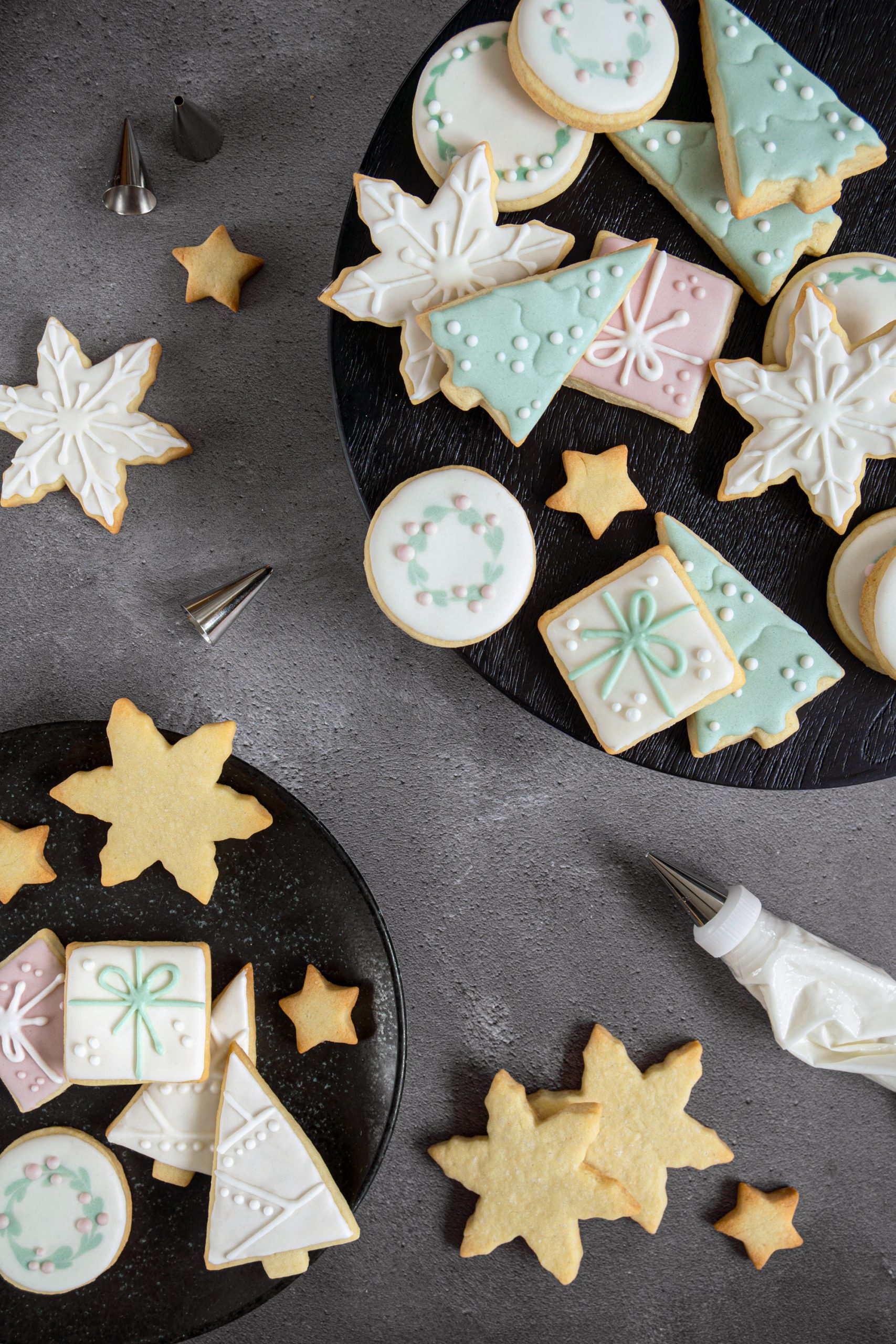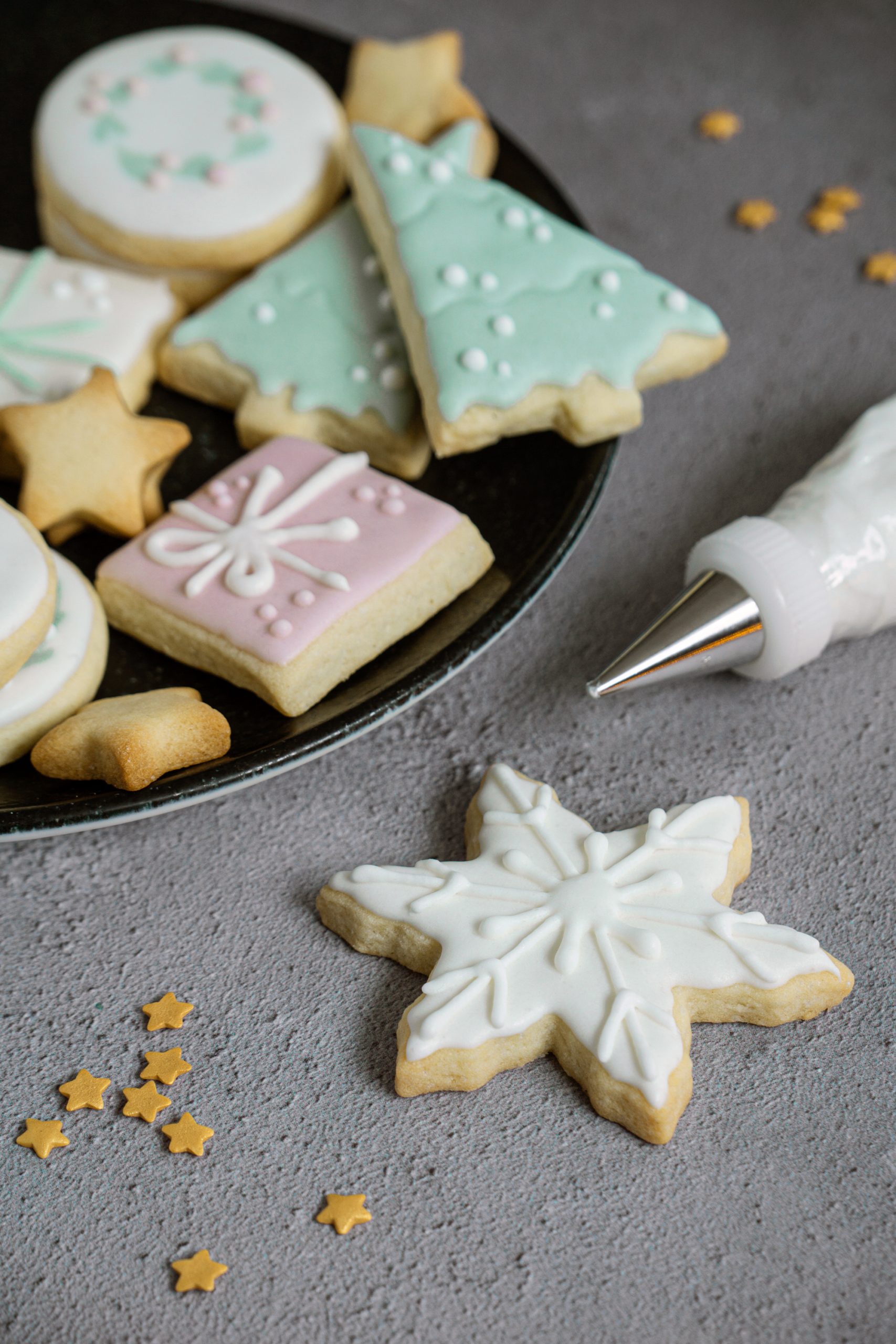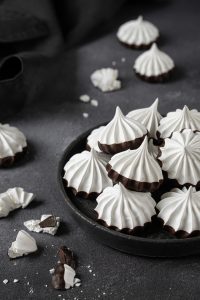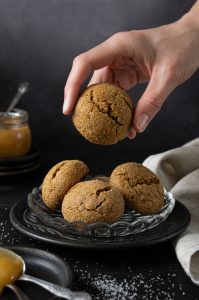Thinking of making beautiful sugar cookies for Christmas? Have detailed designs in mind? I am here to help you with my foolproof Royal icing recipe. This icing is made with fresh egg whites, so you will not have to run around the city looking for fancy ingredients. And don’t worry about eating raw eggs, we will use an easy process to pasteurize them at home.
What is Royal icing?
It’s a classic cookie icing, usually used by professional decorators. The two main ingredients of Royal icing are powdered sugar and egg whites. Actually, this icing is a type of meringue, only it contains a lot more sugar. After whipping it, it’s pretty thick, but then you can add water to thin it to any consistency you need.
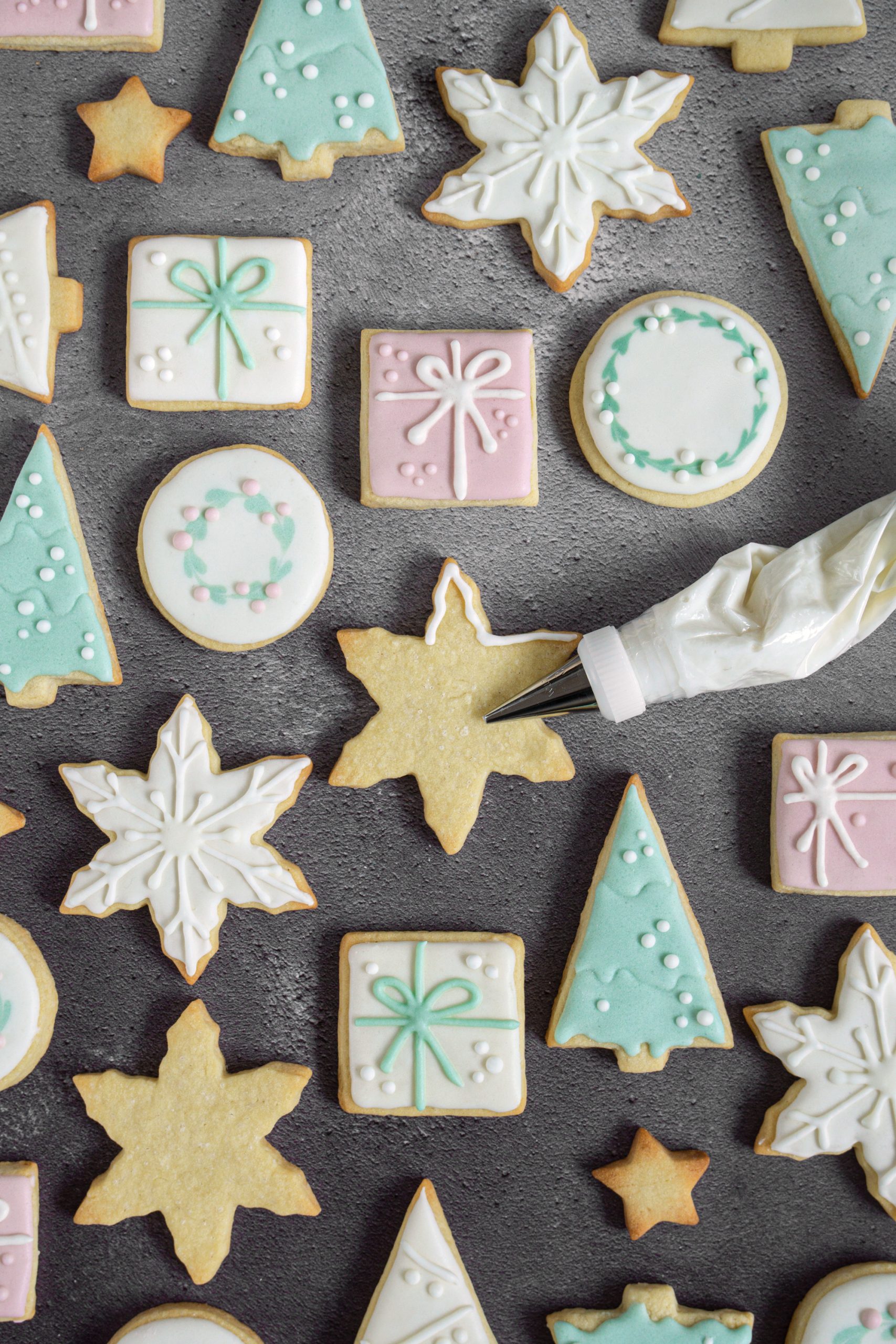
Why choose Royal icing?
It takes a bit of practice, but Royal icing really listens to your hand, so you can create detailed and intricate designs with it. Because of the egg whites in the icing, it dries to a hard candy-like consistency, so you can be sure those details will not get smashed even when transporting the cookies. And it’s super white and totally opaque.
On the other hand, it tastes like… sugar. And it does not add any taste to cookies except extra sweetness. Royal icing is more about the looks, so in case you are looking for tastier icing, try my easy cookie icing recipe.
Royal icing consistencies
To create the design you have in mind you will need the correct consistency of the icing. And here it gets a bit tricky. It has to be quite thin and floating if you want to flood the cookie, but it has to be thicker if you want the details you’ve drawn to stay in the same place and not to change their shape or size. A thinner consistency is better for drawing dots, but thicker is better for drawing lines. OK, it’s confusing, so let’s get a bit more specific.
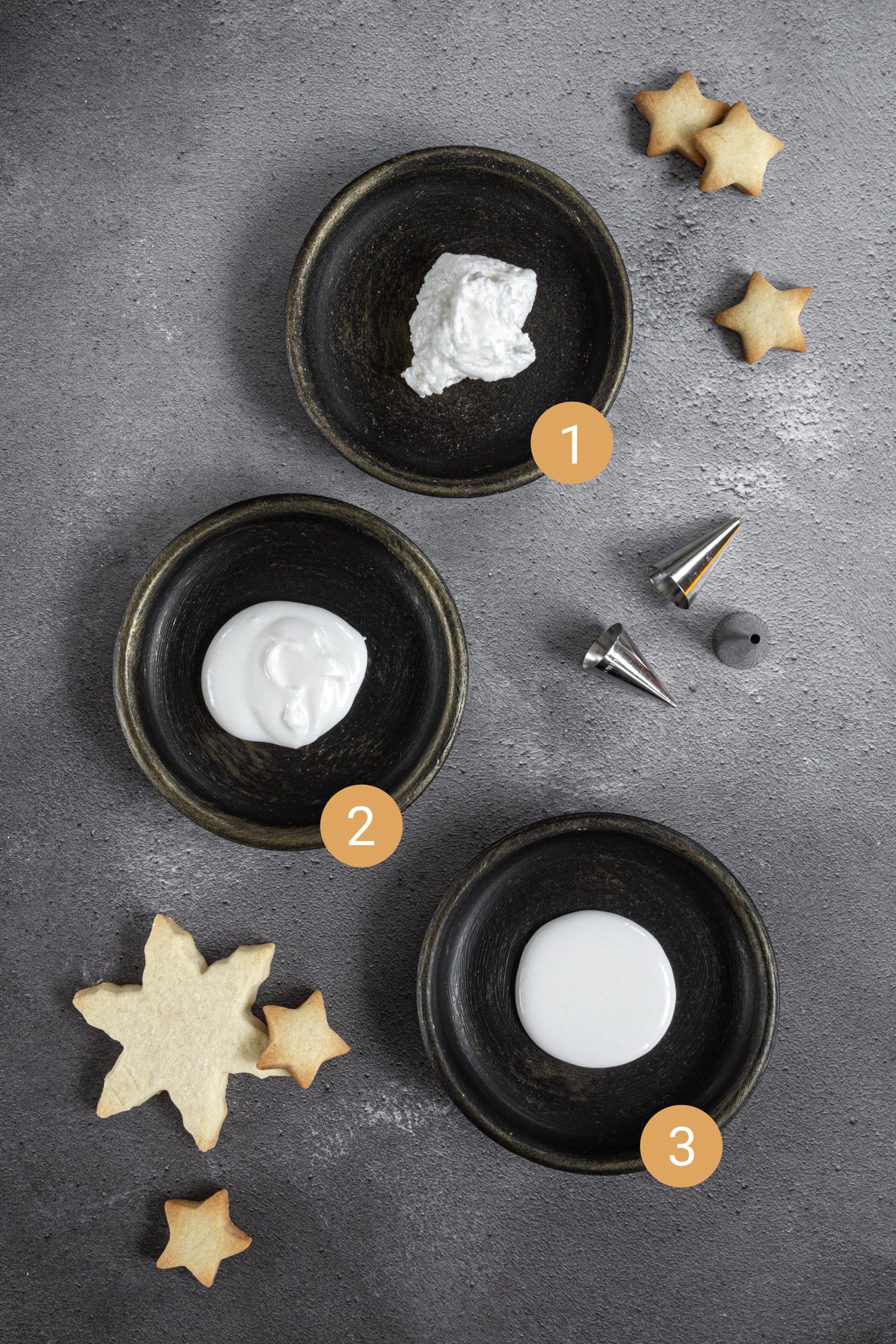
The icing, which was just prepared is stiff (no. 1 in the photo above). It can be used to pipe dimensional details (like flowers) or simply stored in an airtight container to be thinned and used when you need it.
Piping consistency is reached while thinning the stiff icing with water. This consistency partly smooths out in 20-25 seconds, but lines do not disappear fully (no. 2 in the photo above). It can be used to draw smaller details or write letters.
Flood consistency is reached while thinning icing further. When the icing settles totally flat in anywhere between 8-15 seconds, it’s in the flood consistency (no. 3 in the photo above). 15-second consistency also works for details, when you want them to slightly blur out, like dots for example.
Here are rough guidelines and it’s slightly personal, which exact consistency to use. So you will have to find the perfect one (or two) with practice. To flood the cookies, I prefer 10-second consistency, and to pipe details – 20-second consistency.
How to use royal icing if you are a beginner?
If it’s the first time you are making Royal icing, all that different consistencies can make your head spin. But you can still decorate with this icing without getting overly confused. Thin the stiff icing to the 15-second consistency and use it for everything: outlining the cookie, flooding the cookie, and drawing simple details on top. When you will get used to how it works and feels, experiment with thicker or thinner consistencies.
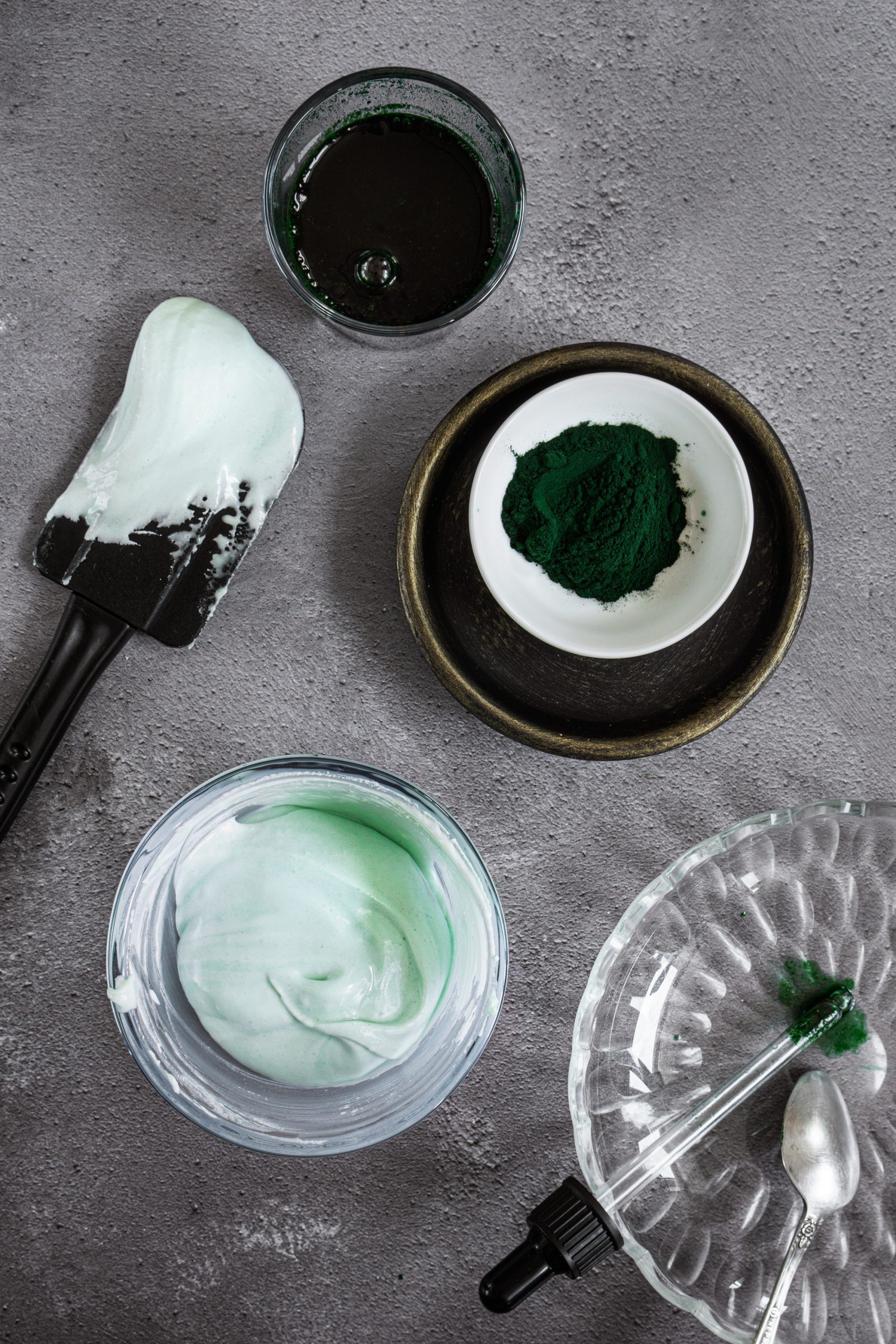
How to color Royal icing
The easiest way to color any icing is gel food coloring. It’s concentrated, so you can get intense colors with little amount and it will not change the texture of the icing. But what if you want to use natural coloring?
To color my easy cookie icing, I add powdered lyophilized berries or other edible powders. This does not work so well with Royal icing: dry powder messes up icing consistency and colors look quite uneven. The better option for Royal icing is liquids.
To create the mint green color you see in the photos, I mixed spirulina powder with water and used this colored water to thin the icing. For the pink color, I added a few drops of beetroot juice while thinning the icing. Obviously, you cannot color stiff icing this way. And to thin the icing, only a small amount of water is needed, so you can only get light pastel colors. For intense colors, gel food coloring is the only option.
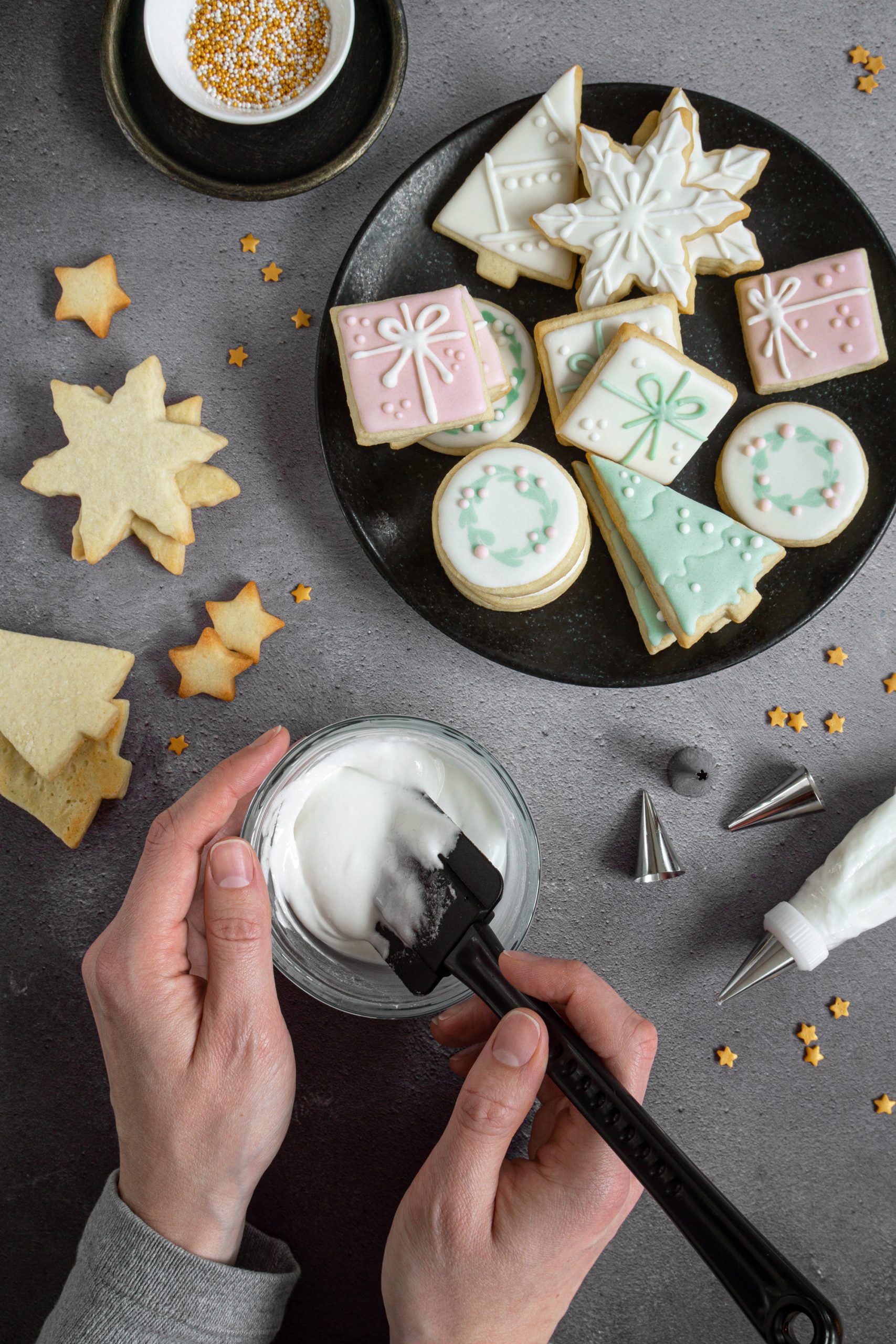
A few extra tips for decorating with Royal icing
- To decorate cookies, transfer the Royal icing to piping bags or drip bottles, anything you prefer. Any plastic bag can work as a piping bag, as long as it’s not very thin and soft.
- You can use piping tips or simply cut a hole at the tip of the piping bag.
- The size of the hole or piping tip is important: it will be a lot easier to work with smaller ones, but the finest tips tend to clog faster. Both for outlining and flooding the cookies, I use Wilton #3 piping tip.
- If you are using piping tips, I recommend also using adapters. This way you will be able to comfortably change tips between bags, or easily wash the tips in case they get clogged.
How to store Royal icing?
You can make Royal icing ahead of time and store it in an airtight container in the fridge for up to 2 weeks. While sitting untouched icing will separate, so mix it well before using. You can also freeze it for up to 3 months.
What kind of cookies to decorate with Royal icing?
Decorate sugar cookies, gingerbread, or any other type of cut-out cookies with Royal icing.
How long does it take for Royal icing to set?
The flood consistency Royal icing will take at least 6 hours to fully set. But to be completely safe, leave your decorated cookies in the open air at room temperature overnight.
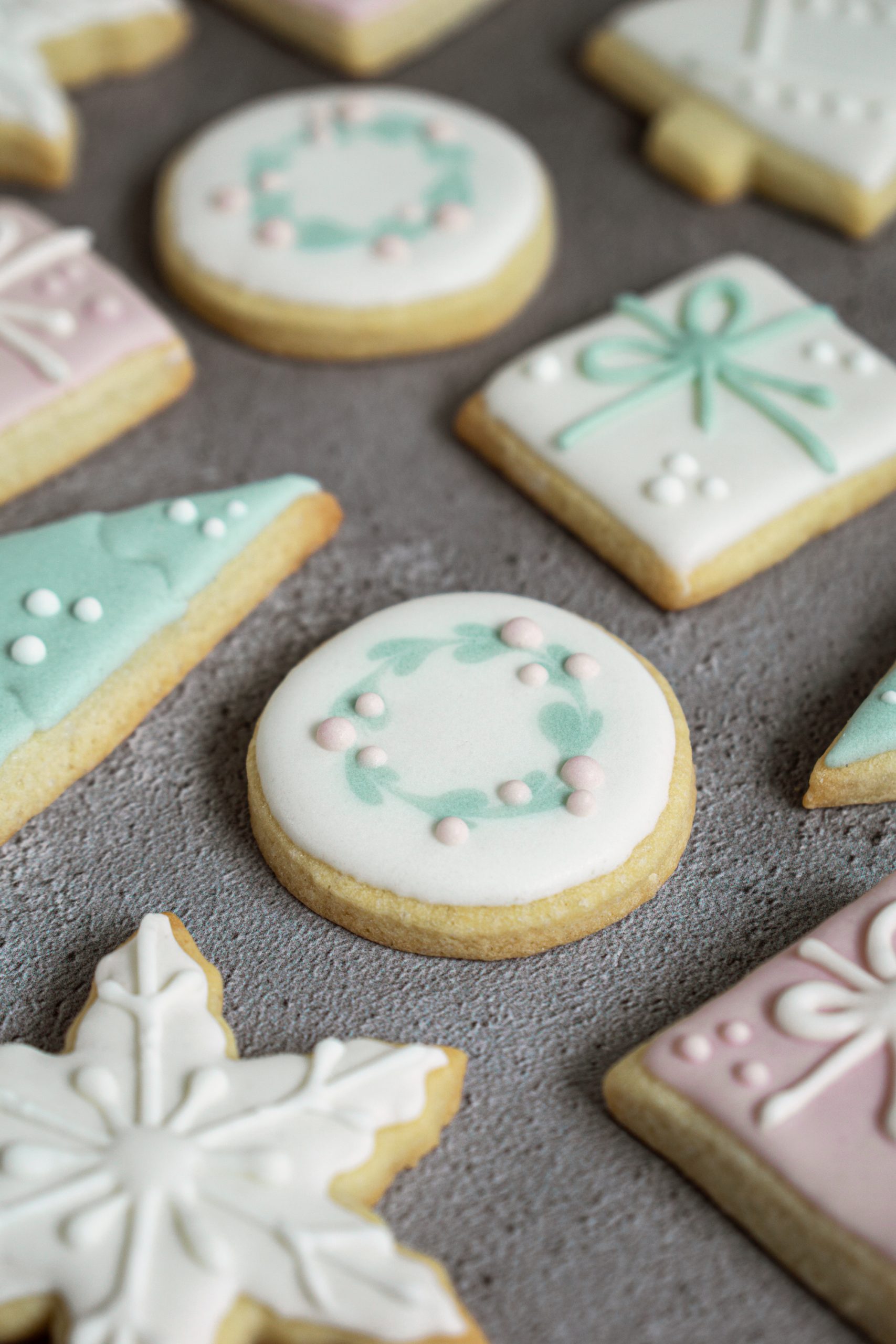
Royal Icing (With Fresh Egg Whites)
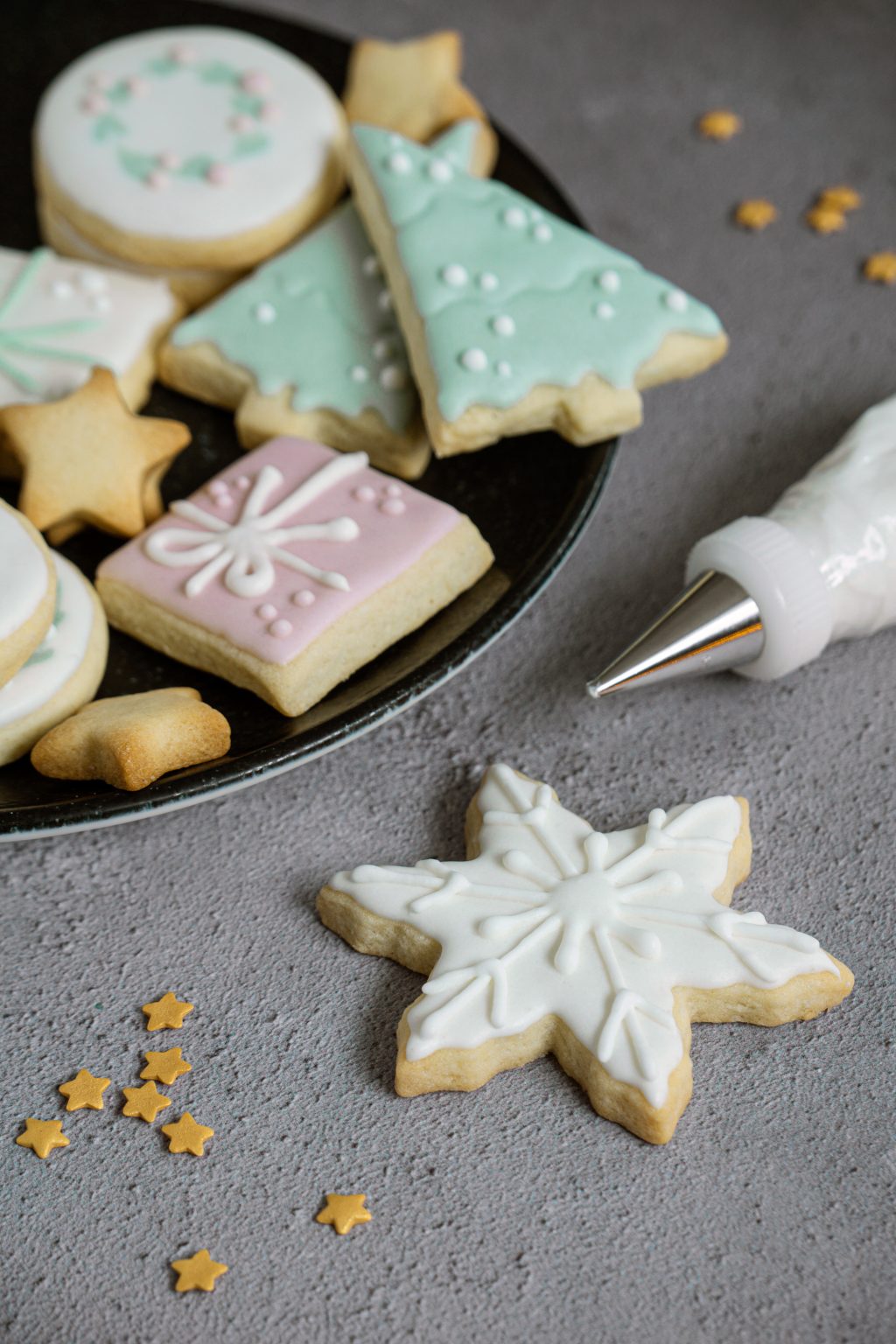
This Royal icing is made with fresh egg whites and includes no fancy ingredients. Don’t worry about eating raw eggs, we will use an easy process to pasteurize them at home.
- Prep Time10 min
- Bake / Cook Time5 min
- Total Time15 min
- Course
- Dessert
- Tags
Ingredients
- 100 g / 3.5 oz egg whites (~3 medium egg whites)
- 500 g / 17,6 oz icing sugar (divided)
- 1 tsp lemon juice
- 2 tsp vanilla extract
- Room temperature water to thin the icing
Directions
Prepare the stiff icing
Sift 300 g / 10,6 oz of icing sugar into a big bowl and set aside.
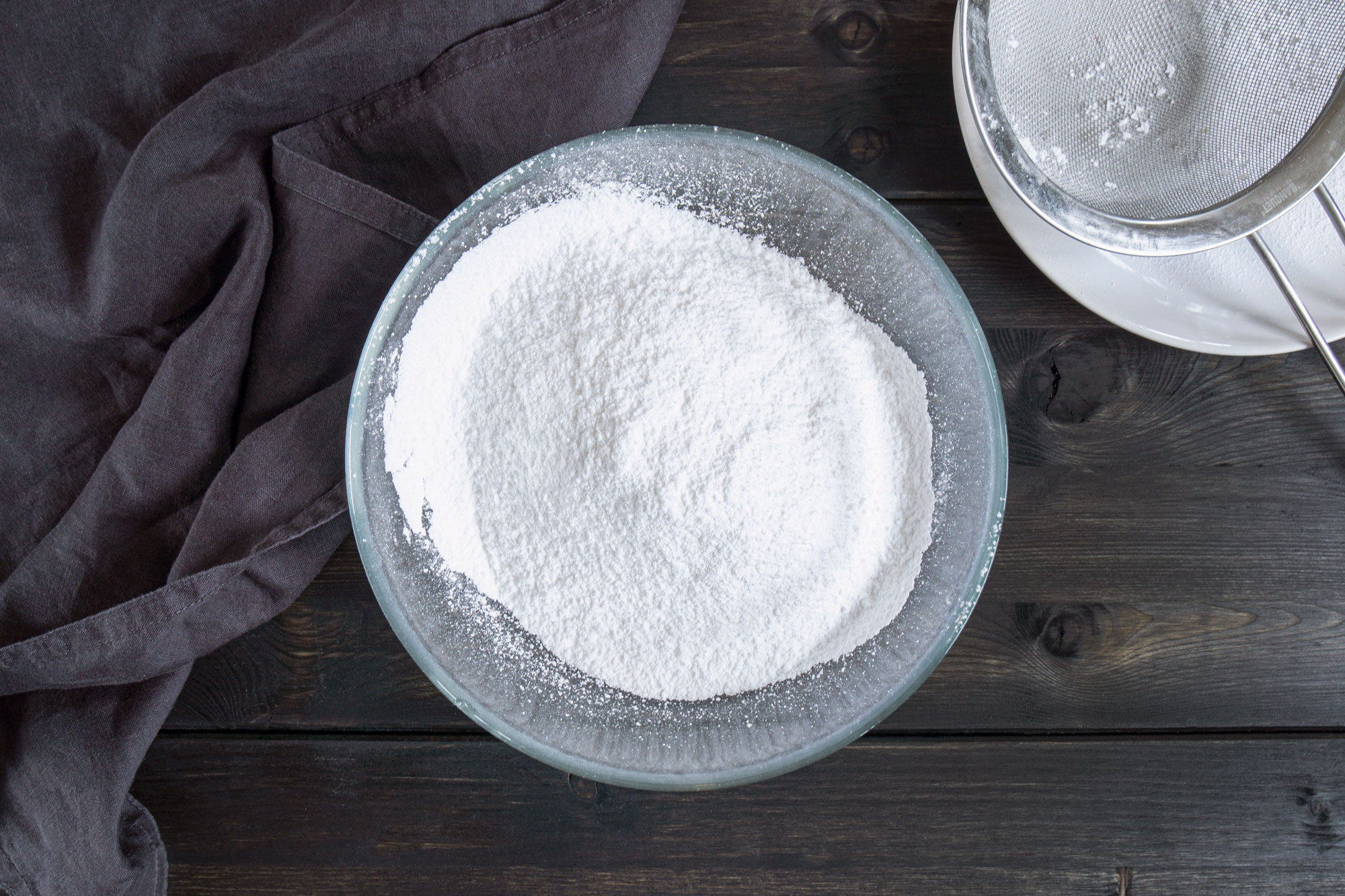
In a metal bowl combine egg whites, remaining 200 g / 7 oz of icing sugar, and lemon juice. Put this bowl on top of the saucepan with steaming water making sure that the bottom of the bowl is not touching the water. Heat the mixture stirring all the time, till sugar fully dissolves and the mixture reaches 72°C / 161°F. It will take about 5-7 mins. At this moment your egg whites are pasteurized.
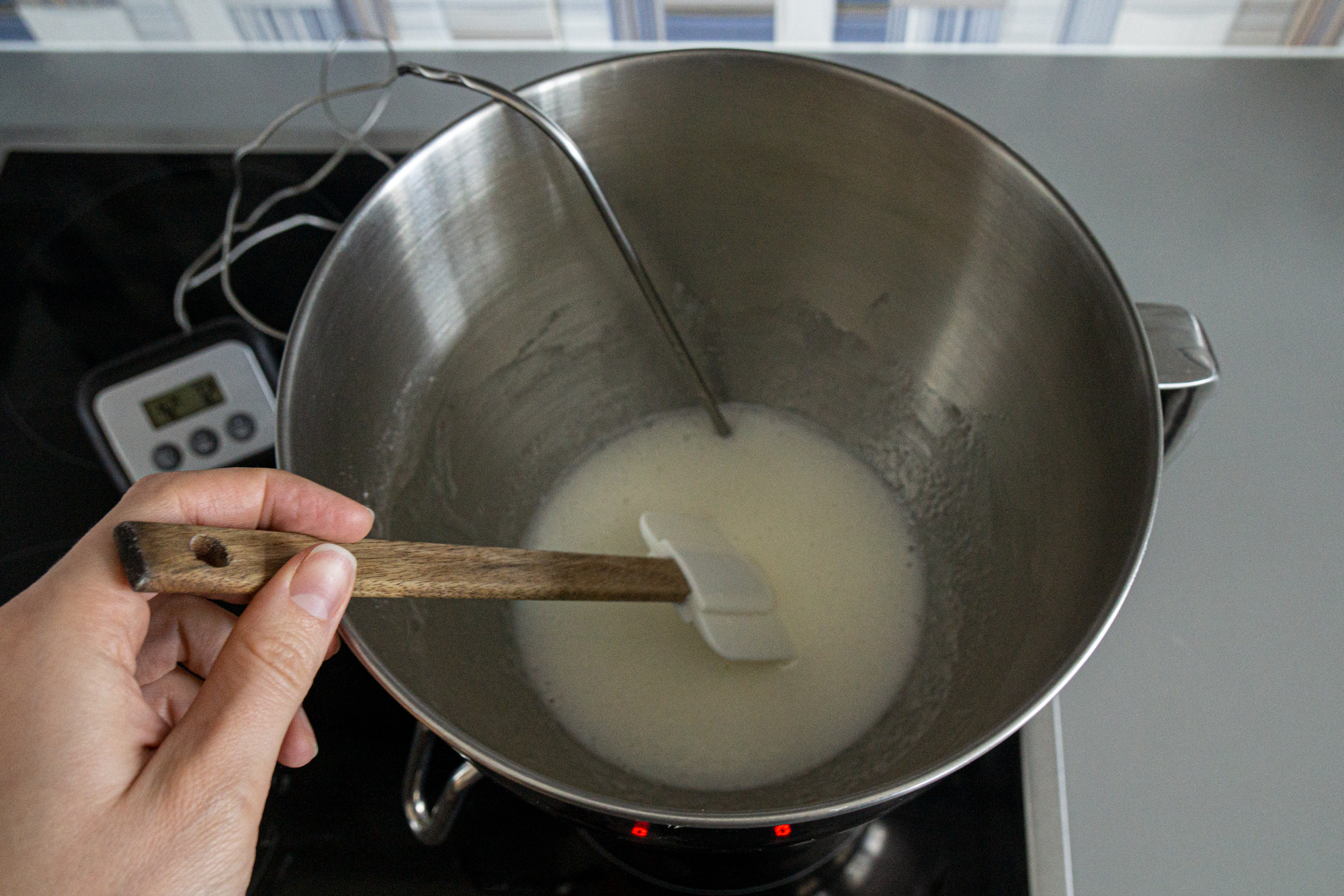
Remove the egg white and sugar mixture from the heat and start whisking it with a hand-held or stand mixer. When volume slightly increases, start adding the remaining icing sugar you have sifted before. You can stop the mixer and add a third of the sugar at a time, or add it spoon by spoon while the mixer is running.
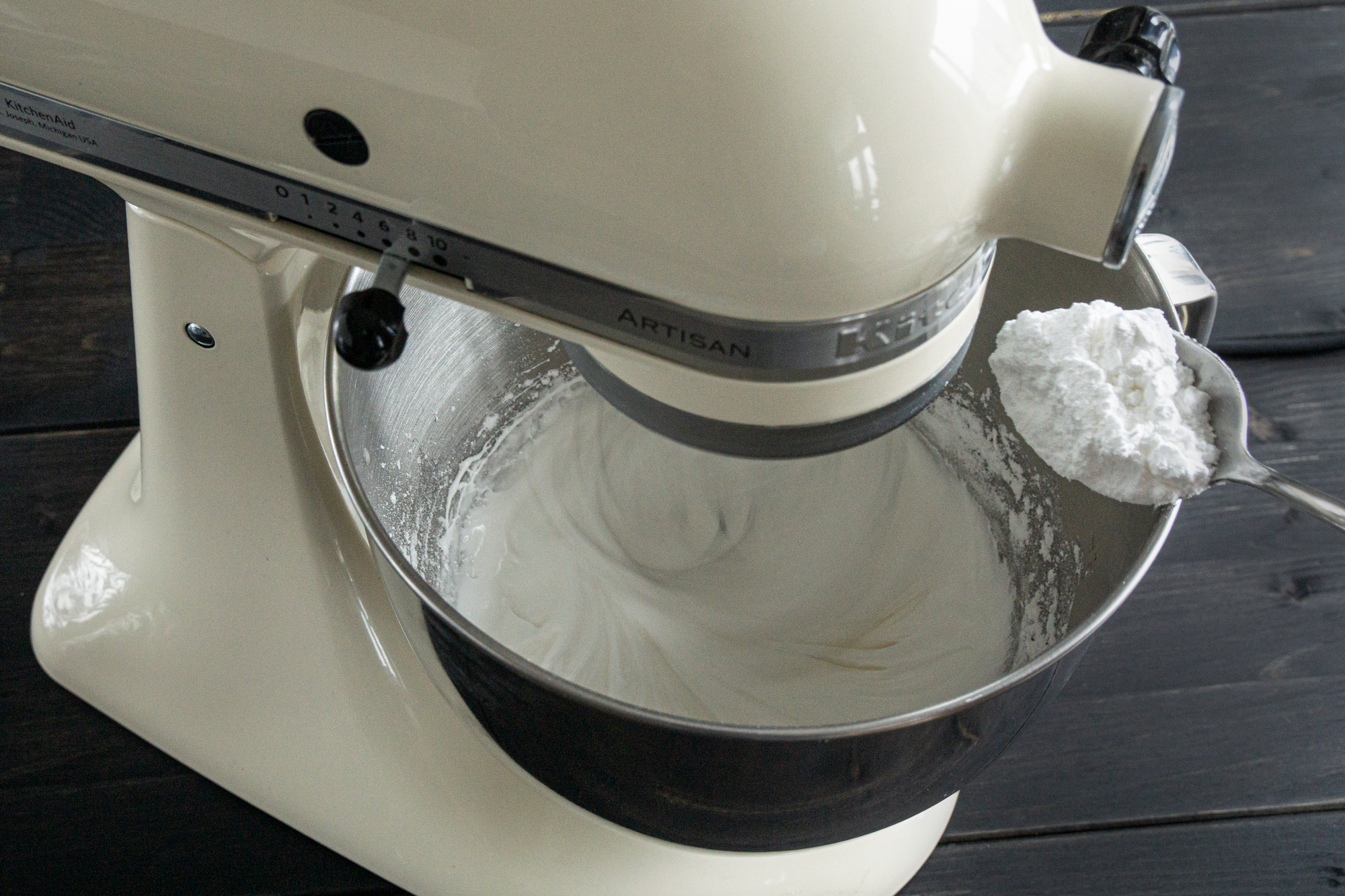
After adding all the sugar, whisk a minute longer till you have a thick icing, that holds its shape.
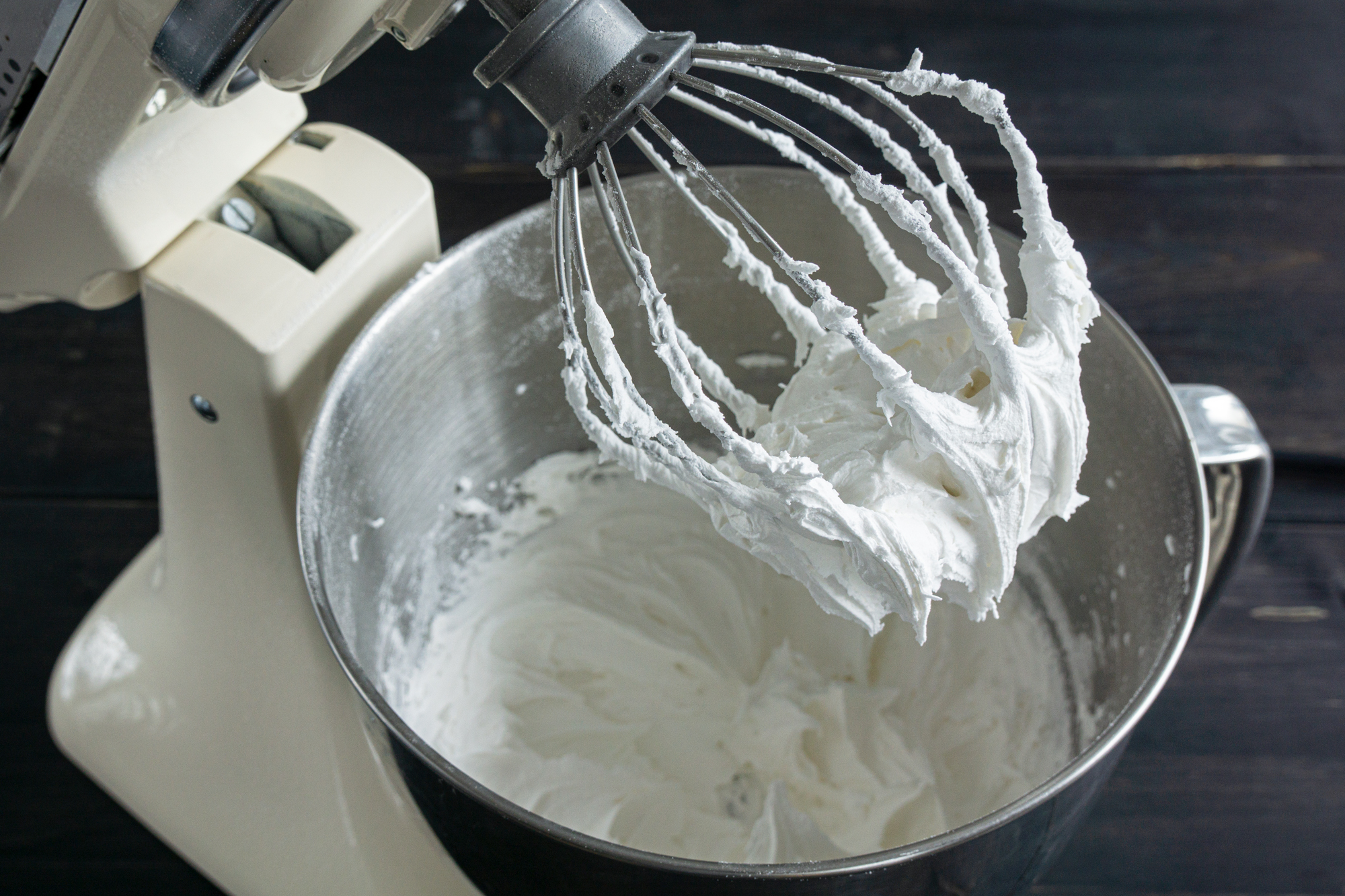
Add vanilla extract and whisk a bit more to incorporate it. The extract will slightly thin the consistency.
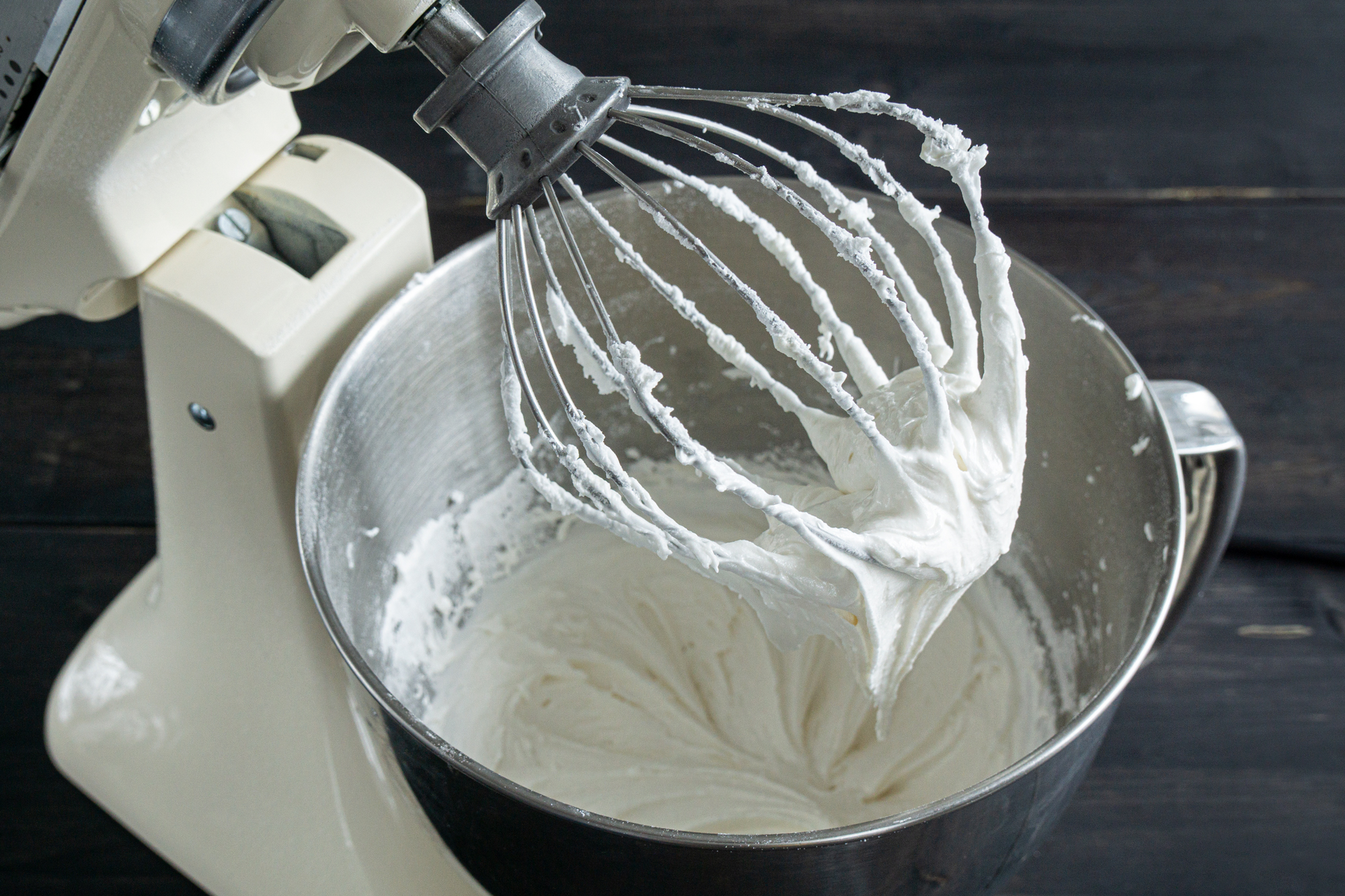
Thin the icing to the flood consistency
Use a dropper or a teaspoon to add small amounts of water to the icing and mix it with a silicone spatula or a spoon.
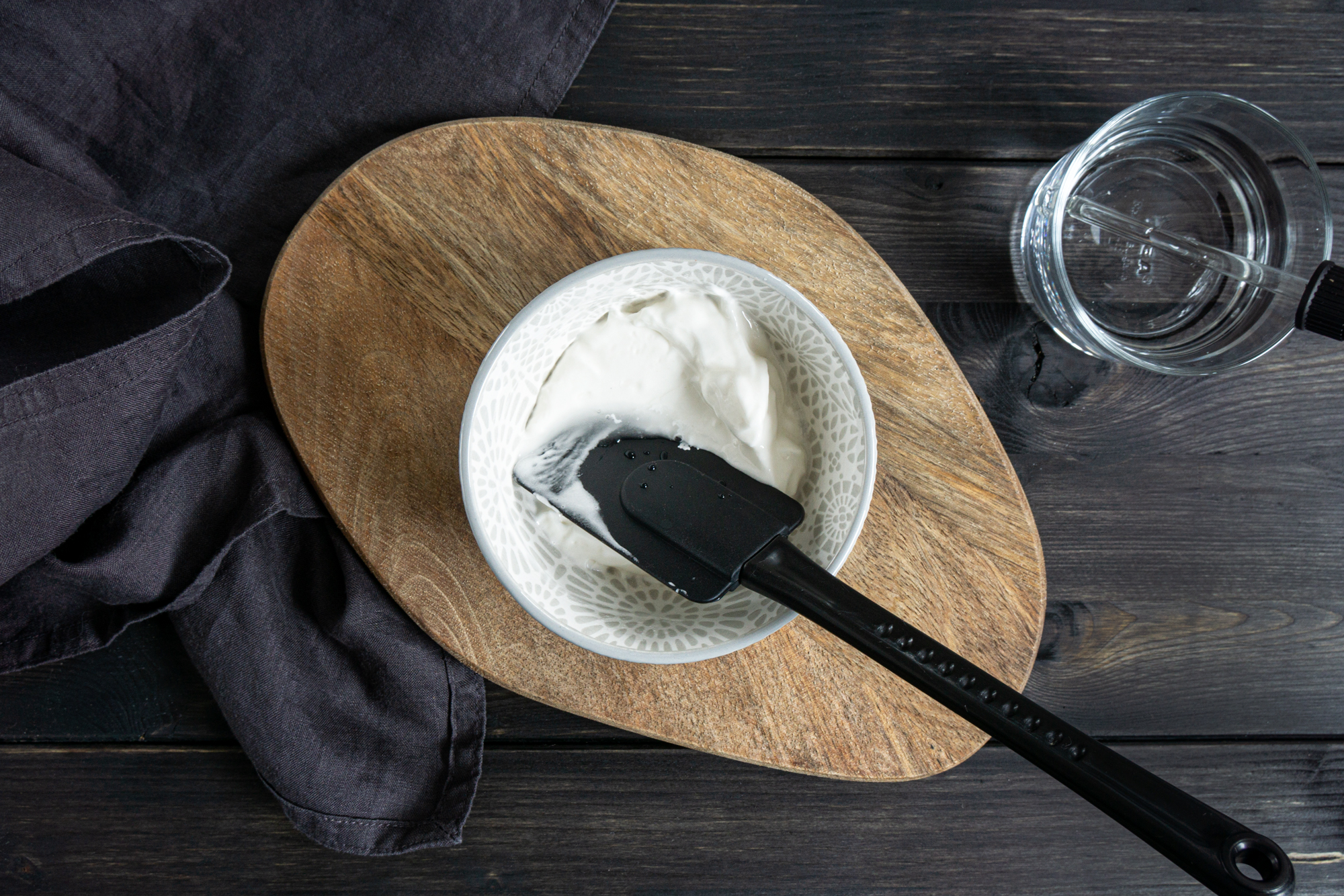
Keep adding water, a few drops at a time, and mixing till you reach flood consistency. When lifting the spatula, the icing should fall in ribbons. Those ribbons should level themselves and totally disappear after 10-15 seconds (see chapter Royal Icing Consistencies above for more information).
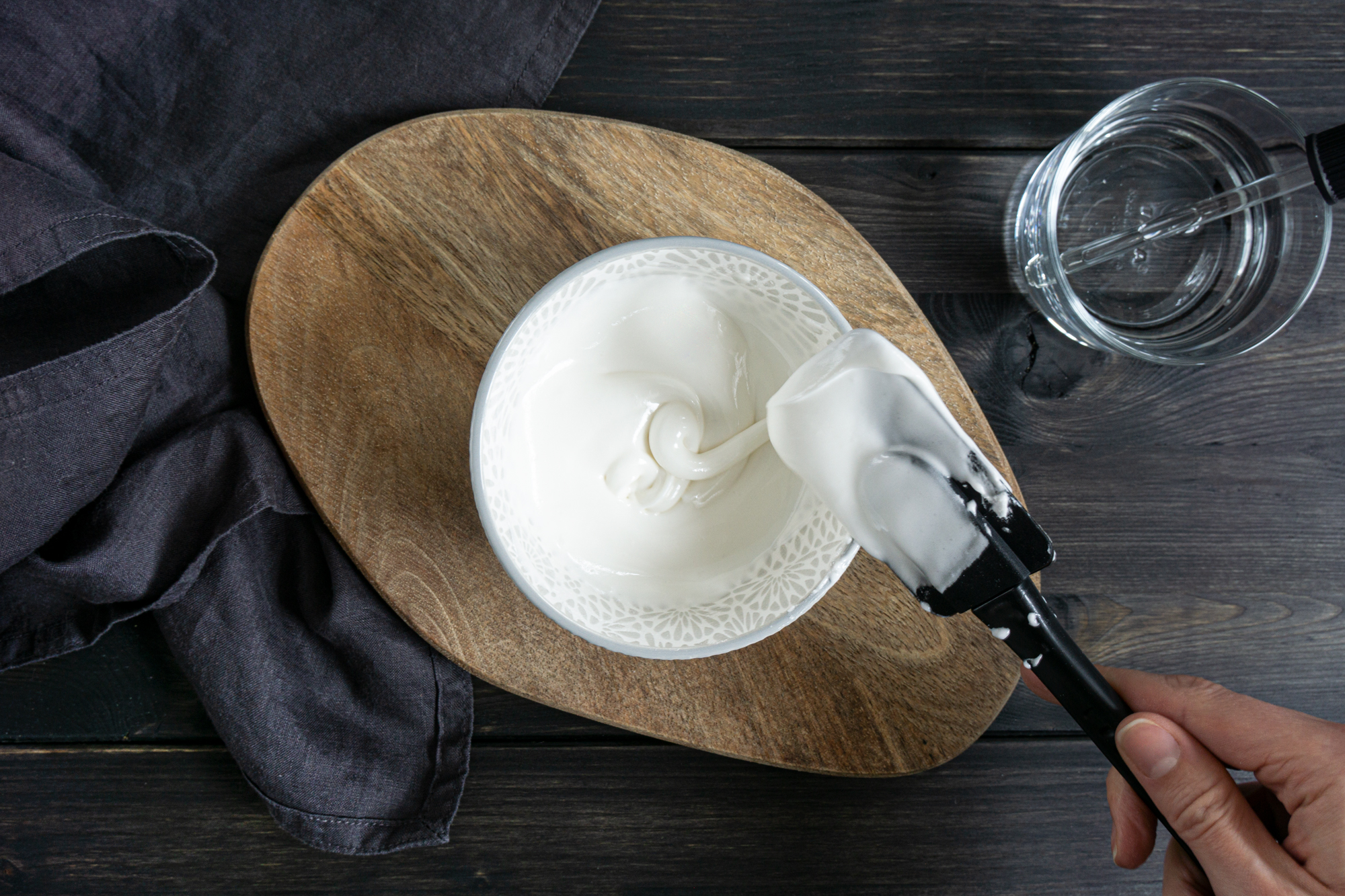
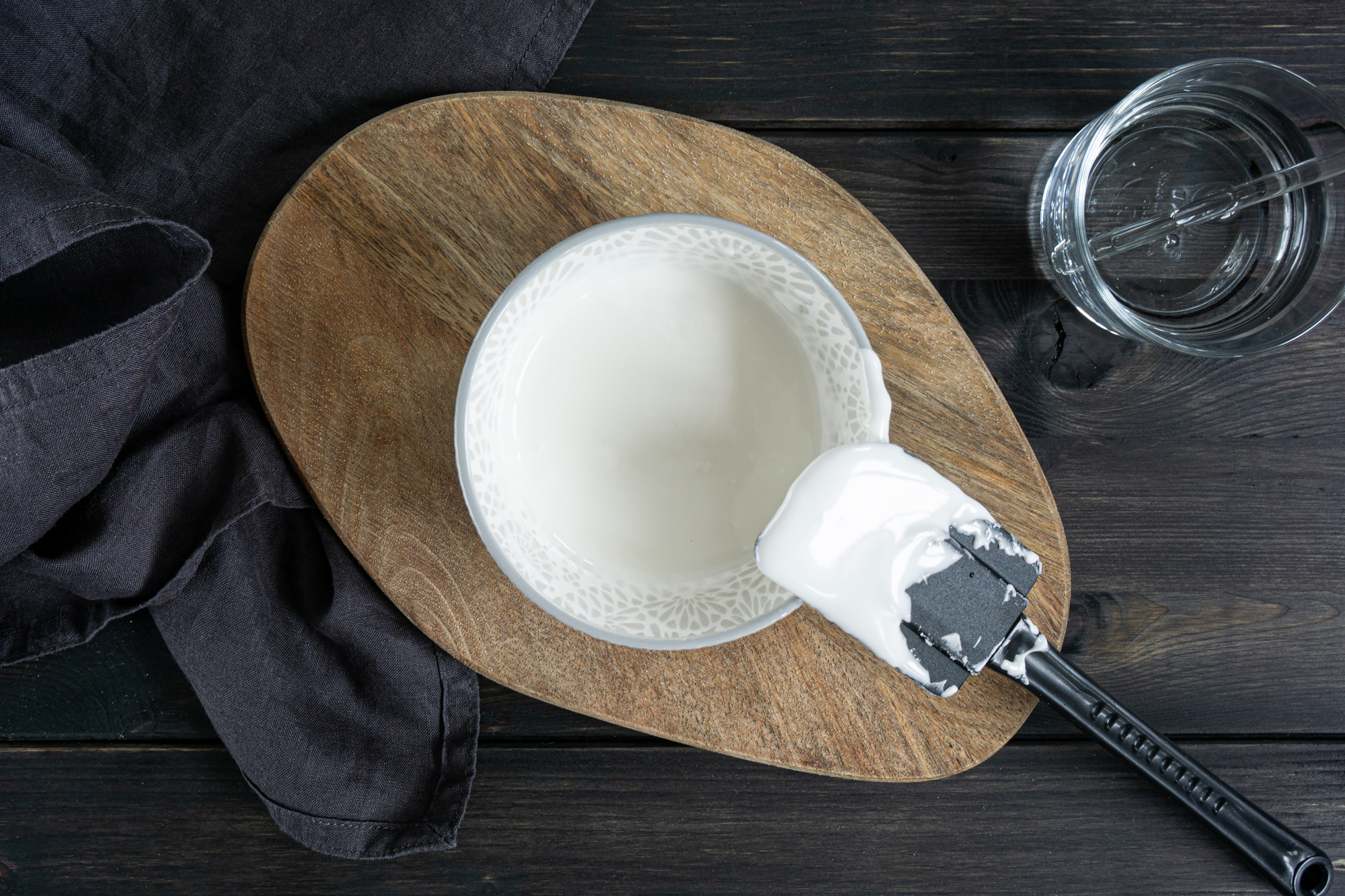
Decorate the cookies
Transfer the flood-consistency icing to a piping bag or a drip bottle.
Press the piping bag lightly with your fingers and draw a cookie shape outline with the icing.
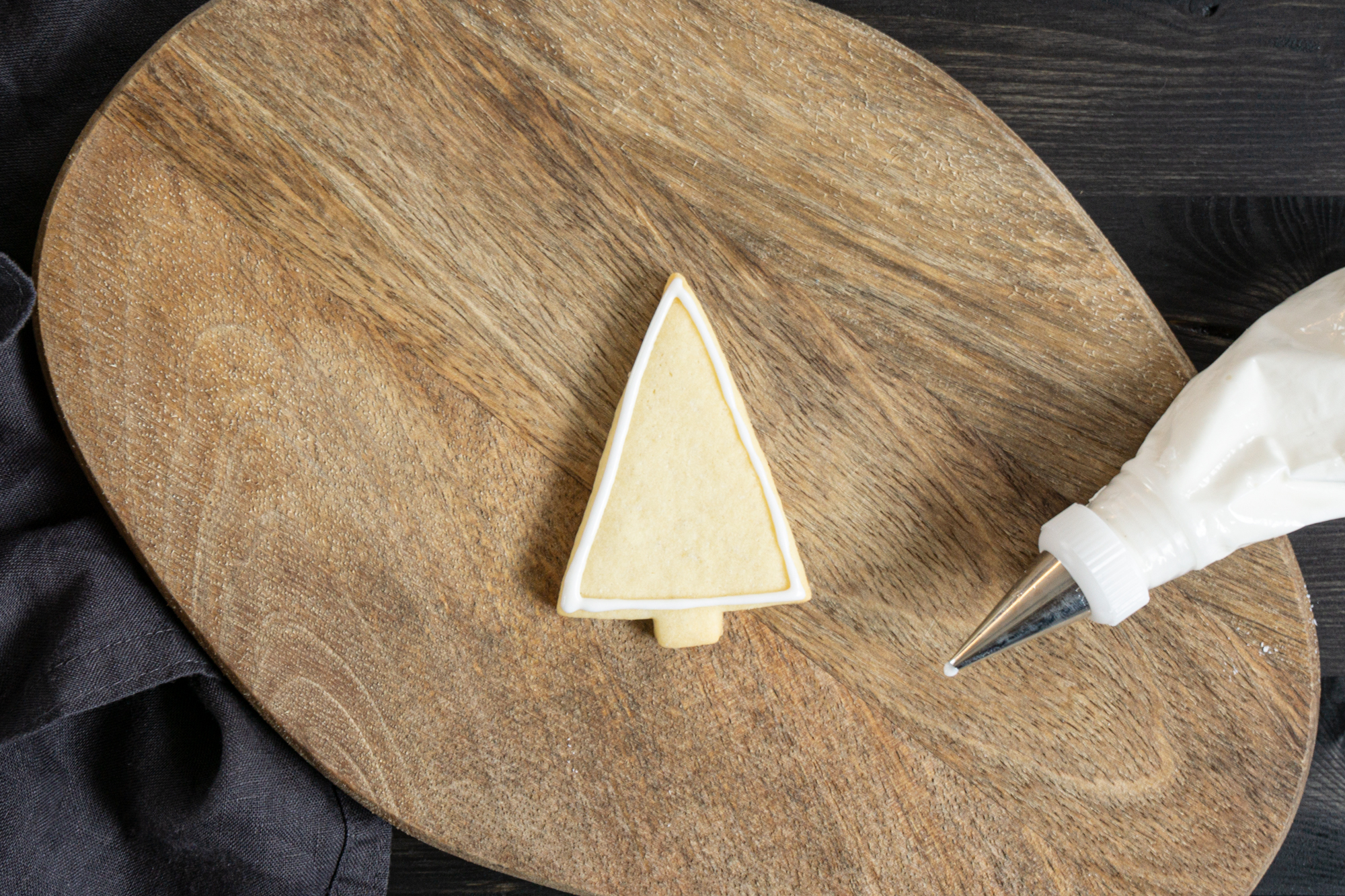
Without waiting for the outline to dry, adding slightly more pressure, immediately flood the inside of the shape with the icing. Don’t worry about little gaps.
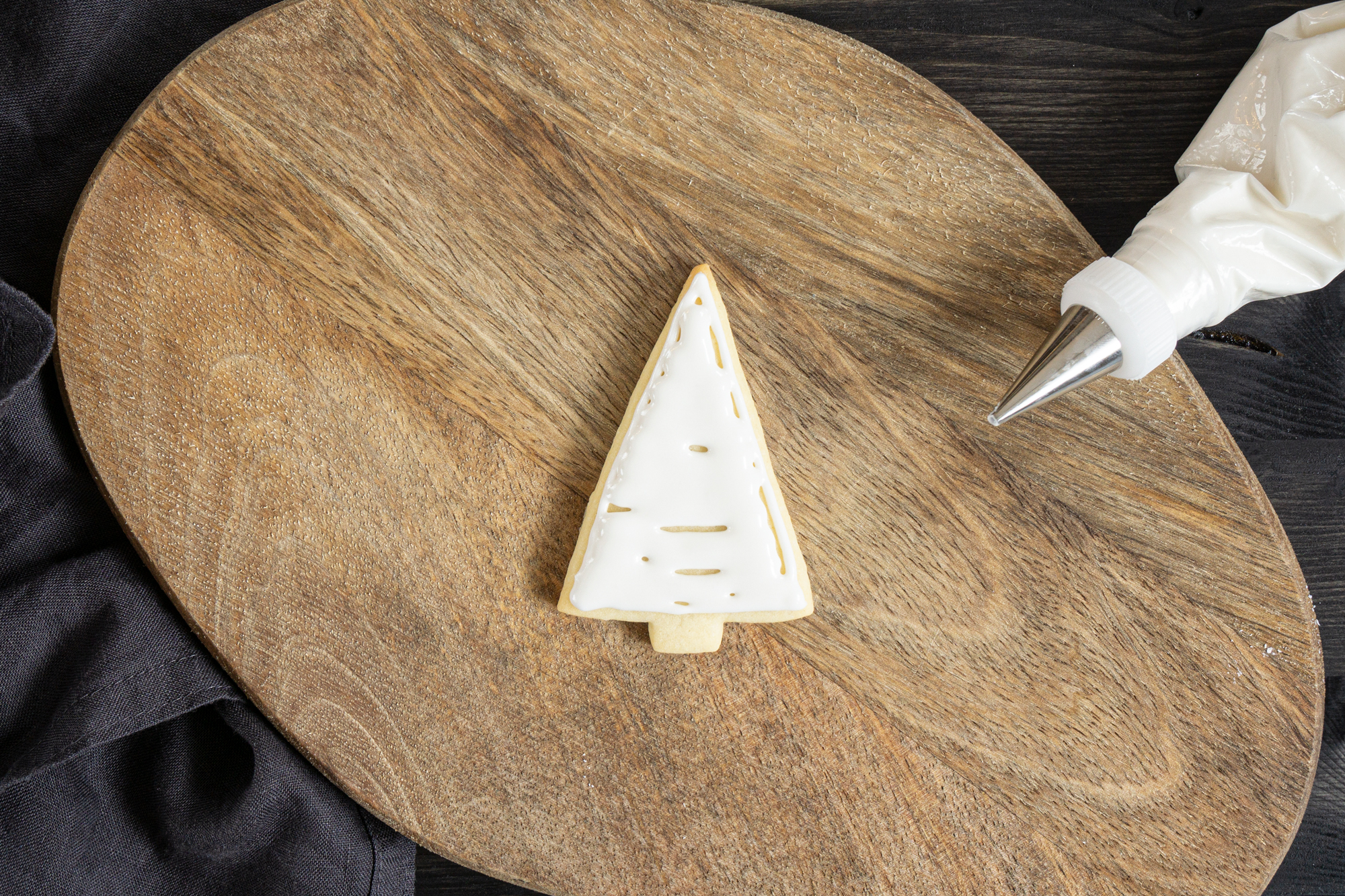
Use a toothpick to move the icing around, fill the gaps and remove air bubbles, if there are any.
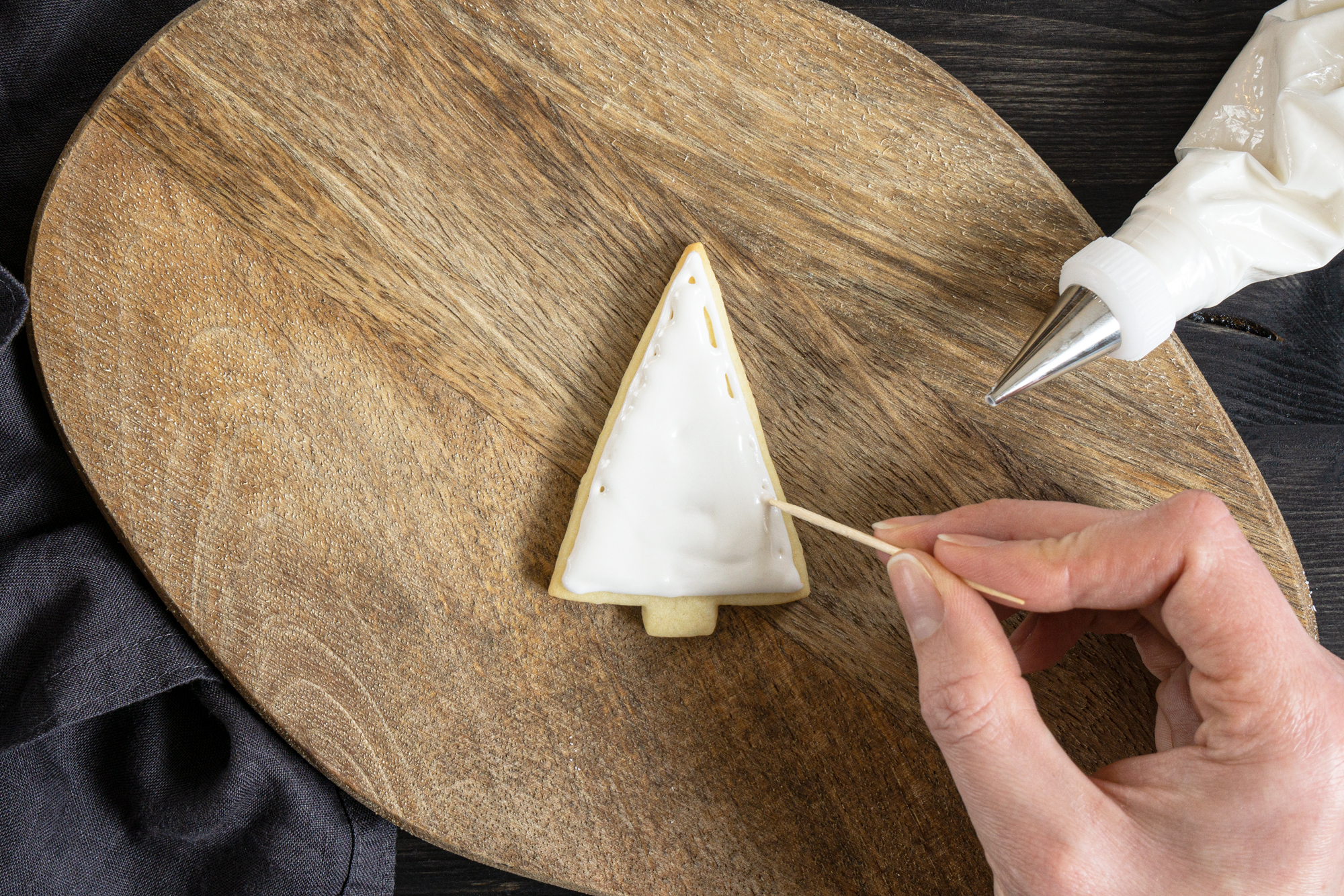
Lightly shake the cookie horizontally to help the icing to smooth faster.

If you are adding sprinkles, do it now so they can stick to the wet icing. If you wish to draw extra details with icing on top, wait for the first icing layer to partly dry, at least until the top gets matte. Depending on what kind of details you are going to draw, the same flood consistency might work or you might need a different consistency icing. Read the chapter Royal Icing Consistencies above for more information.
Leave decorated cookies in the open air at room temperature for at least 6 hours or overnight to fully dry.
notes
To thin the icing, use room-temperature water. Don’t use hot or very cold water.
When you are getting close to the right consistency, don’t add more than a drop of water. A little water goes a long way.
If you accidentally thin your icing too much, mix in a bit of stiff icing or add some more sifted icing sugar.
Don’t leave Royal icing in the open air or it will start crusting quickly. When not in use, cover it well with plastic wrap or keep it in an airtight container. When not using a piping bag, cover the piping tip with a wet paper towel, or crusting icing can clog the tip.
